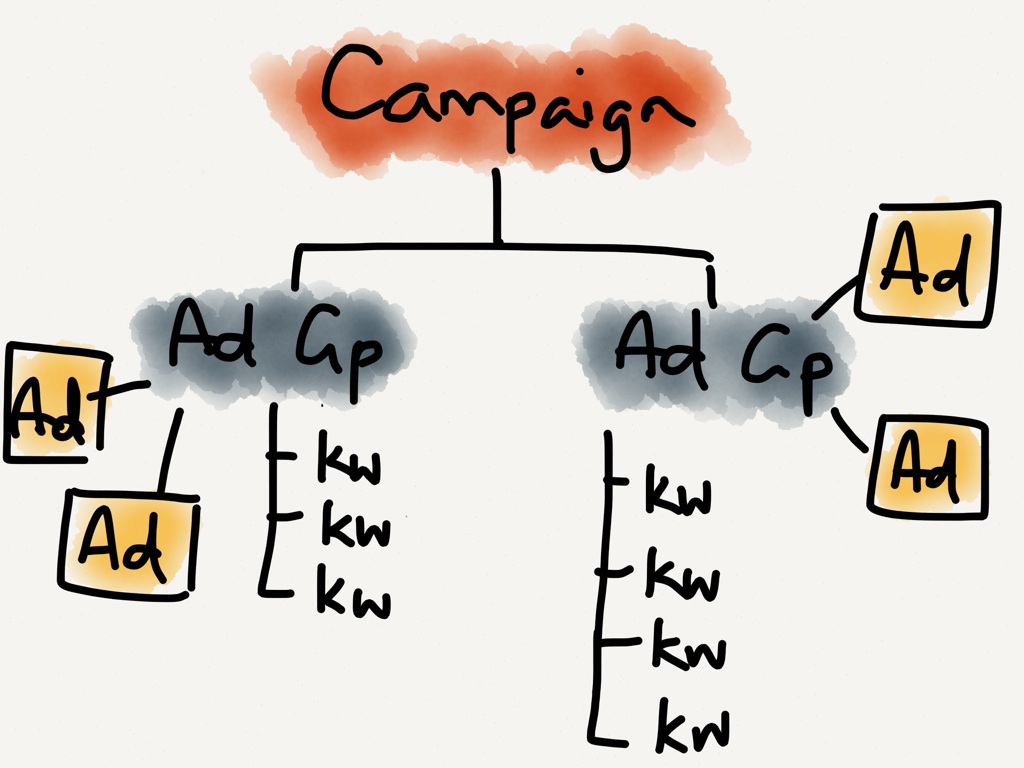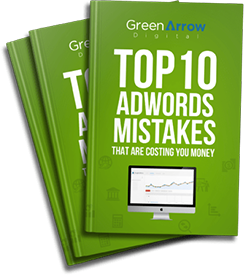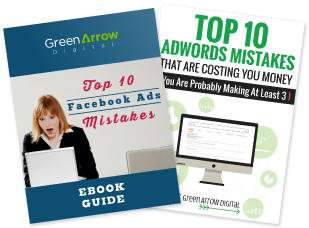Like anything, there are many different ways of doing things. And often, the is not one right way of doing something.
However, when it comes to AdWords account structure, there is only really one correct way of implementing it.
I’ll first go into HOW to implement the right structure and then later I will explain WHY it is important.
How to implement the right structure into you account?
Think of your AdWords account like a ‘tree’ like structure, in terms of hierarchy. The trunk being Campaigns. Shooting off from the ‘trunk’, aka Campaigns, are the ‘branches’, aka Ad Groups. This is because you can have many Ad Groups in one campaign. And then off each ‘branch’, aka Ad Groups, are ‘leaves’, aka Keywords. Like branches, there can be many keywords in one Ad Group. It is best shown in the illustration below.

When you set up your account for the first time, you will create a campaign, ad group and various keywords. However, the common mistake that people make is that they only create ONE campaign, ONE ad group and LOTS of keywords in that ad group. This is bad account structure so please do not make this easy mistake.
In fact, I will show you a screenshot of an account which we took on which had hundreds of keywords in ONE ad group (the screenshot obviously can’t capture all the keywords but it is just to give you an idea). This is wrong and your AdWords account will never succeed if you do this. The sad thing is that so many people fall into this trap since Google make it deceptively easy to set up a new account.

So, why do you need proper account structure?
The answer is for many reasons, some are not so obvious as others. And essentially the answer is because you want to ensure that the ad that is shown matches the search query that someone has typed in.
So, in the scenario of having too many keywords in one ad group, your ad will be triggered to appear many times, simply due to the sheer number of keywords in the ad group. The ad will then unlikely be relevant to the search query, resulting in no one clicking on your ad.
This is probably easiest explained with an example. Looking at some of the keywords in the screenshot above (remember these keywords are in ONE ad group):
- drain cleaning
- water leak
- blocked drains
- plumbing leak
- pipe leak
- emergency plumber
You can see that although these keywords are relating to a plumber, they are different types of plumbing services or plumbing problems. So, it would be very difficult to write an ad which would effectively match ALL of those different keywords. The key to success in AdWords is having a relevant ad that is extremely targeted to the searchers specific problem.
So, that is why it is so important to separate out all the different services into separate ad groups. So, continuing on with the example, you would have one ad group about drain cleaning, another ad group about water leaks, another ad group about blocked drains, etc. You get the idea. That way, you can write the most relevant ads for those specific keywords and I guarantee you will get a much higher click through rate following this principle.
Another critical reason is due to budgeting. Adopting good account structure will also mean you can allocate budget strategically and importantly, ensure you are not running out of budget on areas you know are performing well.
A third critical reason to adopt good account structure is due to different location targeting. Since location targeting is done at a campaign level, you will need to separate out the campaigns, ad groups and keywords according to the locations you want to target. In fact, location targeting is a topic in itself which we will talk about another time.
And finally and by no means less important, having good account structure enables you to properly analyze your account. It is only through proper analysis that you can work out what is working in your account and equally important, what is not working. Maintaining and optimizing your account is a critical component to ongoing AdWords success and is an area of AdWords management that we take very seriously.
If you have any further questions about account structure, we recently created a video course talking specifically about this. You can check it out here or by simply going to our Products page.



